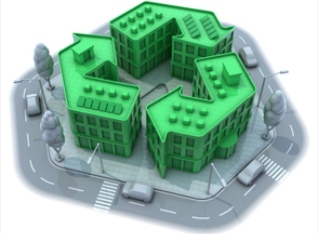When it comes to facilities management, do you leave the heavy lifting up the office tower to the maintenance team or do you go the extra mile to optimize facilities management on the floors of the building you occupy? If you haven’t embraced facilities management yet, now is the time.
A recent report from Sodexo, a world leader in quality of daily life solutions, suggests one of the hottest workplace trends for 2013 is approaching facilities management as a strategy, not a tactic.
What is Facilities Management (FM)? FM as an interdisciplinary field devoted to the coordination of space, infrastructure, people and organization, often associated with business services functions such as offices, according to Wikipedia. Facilities management applies to your business center – and it includes green offices.
For example, carbon has become the currency of the sustainability movement, impacting energy management, waste handling, air quality, environmental stewardship and a host of other sustainability issues. In the U.S., about 40 percent of carbon emissions can be attributed to the construction, operation and maintenance of buildings – a fact that places much of the responsibility for carbon footprint management on facility professionals.
Because energy usage is usually the largest portion of a building’s operational cost, the drive to make buildings more energy efficient directly aligns with the desire to reduce the carbon footprint. As stewards of the built environment, facility managers are in a unique position to measure, monitor and reduce building- and workplace-related carbon emissions. Although you cannot account for what goes on in the rest of the office tower you call home, there are steps management can take to run a green business center. (We’ve written about this topic before. Check our archives for more tips on going green.)
Of course, FM is about more than the carbon footprint. It’s about ensuring the business center is functioning at its optimal level by integrating people, place, process and technology. That includes things like communication, emergency preparedness and business continuity, finance and business, leadership and strategy, project management and more.
If you still aren’t convinced that your business center needs to embrace facilities management, consider this: At the end of the day, FM is not really about managing facilities, Sodexo says. It’s about enabling the workforce to be productive and engaged, and to produce value for the organization. As Sodexo sees it, the workplace is nothing more (or less) than a tool for supporting work, for shaping the experiences of the workforce, and for producing competitive advantage. The same goes for your business center.
“There have been many assertions, over many years, that facilities management should be more strategic,” Sodexo reports. “Recent research provides evidence that FM can have a strategic impact, and should play a strategic role in the enterprise, but whether it will achieve that level of influence in any particular organization depends entirely on the actions taken by senior FM executives.”


 Dr. Gleb Tsipursky – The Office Whisperer
Dr. Gleb Tsipursky – The Office Whisperer Nirit Cohen – WorkFutures
Nirit Cohen – WorkFutures Angela Howard – Culture Expert
Angela Howard – Culture Expert Drew Jones – Design & Innovation
Drew Jones – Design & Innovation Jonathan Price – CRE & Flex Expert
Jonathan Price – CRE & Flex Expert











